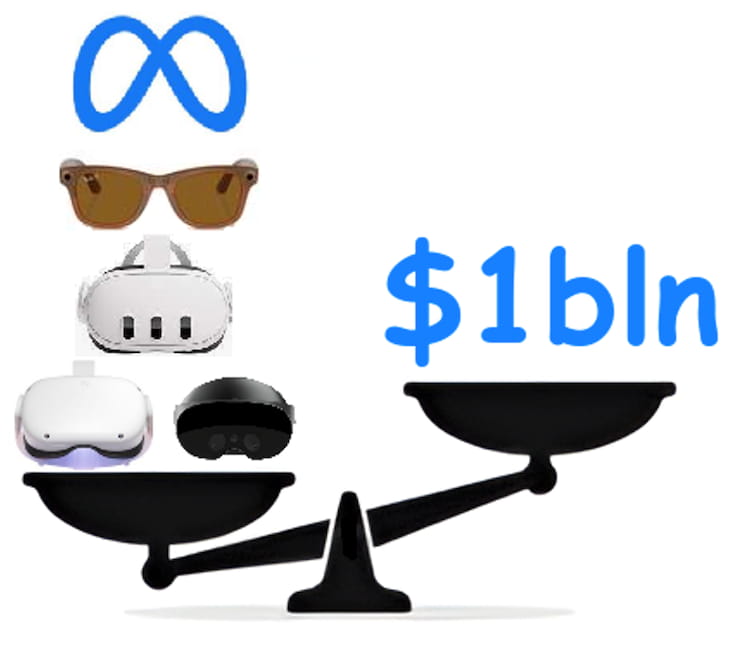
Meta famously doesn’t provide sales numbers, which means analysts must rely on extrapolated data to capture trends. Internal presentation leaks, revenue from games and apps, the number of Quest companion apps installed… these are just some of the creative ways XR experts and enthusiasts have employed to try to figure out the data.
In fact, this publication and its research arm, ARtillery Intelligence, engage in a quarterly exercise to reverse engineer Quest 2 (and now Quest 3) unit sales, given Meta Reality Labs reported revenues. You can see Q3’s treatment here, while Q4 is currently in the works, given last week’s earnings call.
Creative Attempts
Meanwhile, another example of creative attempts to triangulate Meta’s headset sales was recently proposed by developer Daven Bigelow. It relies on data from a Quest 3 game titled “First Encounters.” For those unfamiliar, this is a free, mixed-reality experience that comes bundled on every Meta Quest 3 headset.
We can expect that most individual consumers will most likely try the app at some point. And since
the game tracks each user’s high score, it’s possible to look at the entire scoreboard to see the total number of unique users. And the last time Daven checked, the number was 575,000.
https://twitter.com/JayHadHope/status/1742251845870067925
The Bare Minimum
This means that at the very bare minimum, there are already more than half a million Quest 3s in the wild. A few things to consider here:
- A certain percentage of Quests are owned by commercial and professional entities that might not be interested in installing First Encounters. Therefore, the actual Quest 3 sales numbers might be even higher.
- Inversely, however, as time goes by, an increasing number of second-hand buyers will install the game on separate accounts while using the resold headset, driving the real numbers down.
Therefore, while the metric isn’t perfect by any means, it’s still surprisingly accurate and tells us confidently that Meta has already surpassed the half-a-million milestone.
High-Water Mark
So what do these numbers tell us? In terms of units, Quest 2 sold over 1 million headsets on its debut. That’s substantially more than the number of Quest 3s. However, in terms of revenue, the gap is not really that wide. In 2020, Quest 2 retailed for $299, whereas Quest 3 debuted in 2023 with a price tag of $499. Without going into the details, the revenue difference is actually very narrow, or if the number of Quest 3s is indeed underreported, there might be no gap at all.
Now let’s add the fact that Quest 2 was also selling very well this season. In fact, it was outselling Quest 3 by a factor of 3:1, and the total numbers start to look very good for Meta. Not only are the Quest sales numbers not disappointing or weak, as many were led to believe, but they’re actually stronger than those in previous quarters.
Combining these two factors (the higher price point of the Quest 3 and continued strength of the Quest 2), it should come as no surprise that Meta Reality Labs just reported record-breaking quarterly revenue of $1.07 billion – a new high-water mark for the division.

The Weathervane
Understandably, pundits tend to focus on Quest 3 sales, and for a good reason. After all, Quest 3 is Meta’s new next-generation product, and its sales will serve as a weathervane for VR market trends, brand desirability, demand for innovation, and so on. From that perspective, there’s always some room for concern, but the numbers so far appear to work in favor of cementing Meta’s dominance across the entire low to mid-range XR price spectrum.
 Mat Pawluczuk is an XR/VR writer and content creator. As with all AR Insider contributors, his opinions are his own.
Mat Pawluczuk is an XR/VR writer and content creator. As with all AR Insider contributors, his opinions are his own.

